Jeff mentioned to me that many years before he met me he was out moose hunting on the trails around Susitna Station and had run across an old gravestone. It was covered with overgrowth from the forest but as he neared it he noticed white rock that was unusually square shaped. He scraped off all the sod and grass that covered it and quickly realized it was a gravestone. He didn’t remember the name that was carved on it but the story intrigued me and I wanted him to show it to me so we could find out who was buried there. A lot of people used to live at Susitna Station and there were many people –especially native Dena’ina Indians - that died there during the epidemics that ravaged the village in the early 1900’s. There is known to be a number of graveyards at Susitna but there are none you can make out any longer. Most of the Indians were buried with wooden crosses that did not survive the decades, so to have found a marble headstone out there was unusual.
It was winter 2016 when Jeff told me about the headstone he had found so many years ago but there was no way for him to take me to see it with all the snow covering the ground at that time so in the Springtime when the snow melted I reminded Jeff about going to look for it. We took a drive out on the 6 wheeler to the area where he remembered seeing it. Originally when he found the gravestone he left it alone and did not mark it but he knows the area well and was confident we were in the right vicinity. I was amazed he could recognize the area as to me everywhere in the woods looked the same.
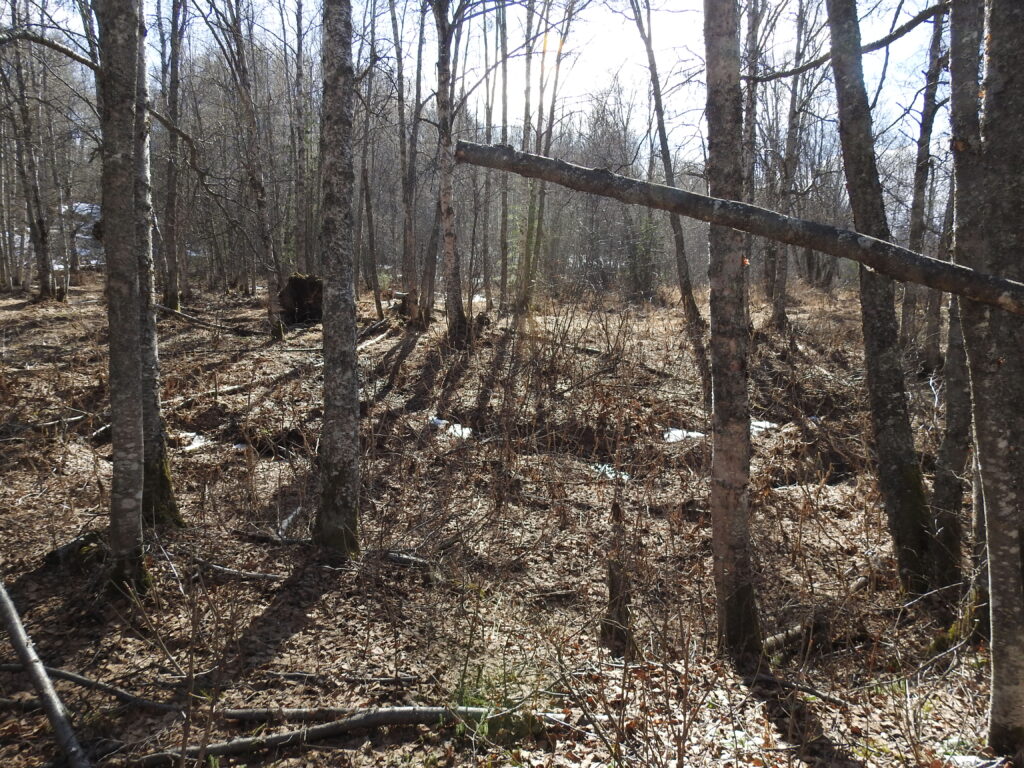
Spring is the best time to get around the forest before it gets too lush with growth that would make travel almost impossible. It had probably been 10 years since Jeff had seen the gravestone but I was determined to find it. We began looking and there was nothing that stood out at first glance but sure enough we finally came across some unusually square shapes in the ground.
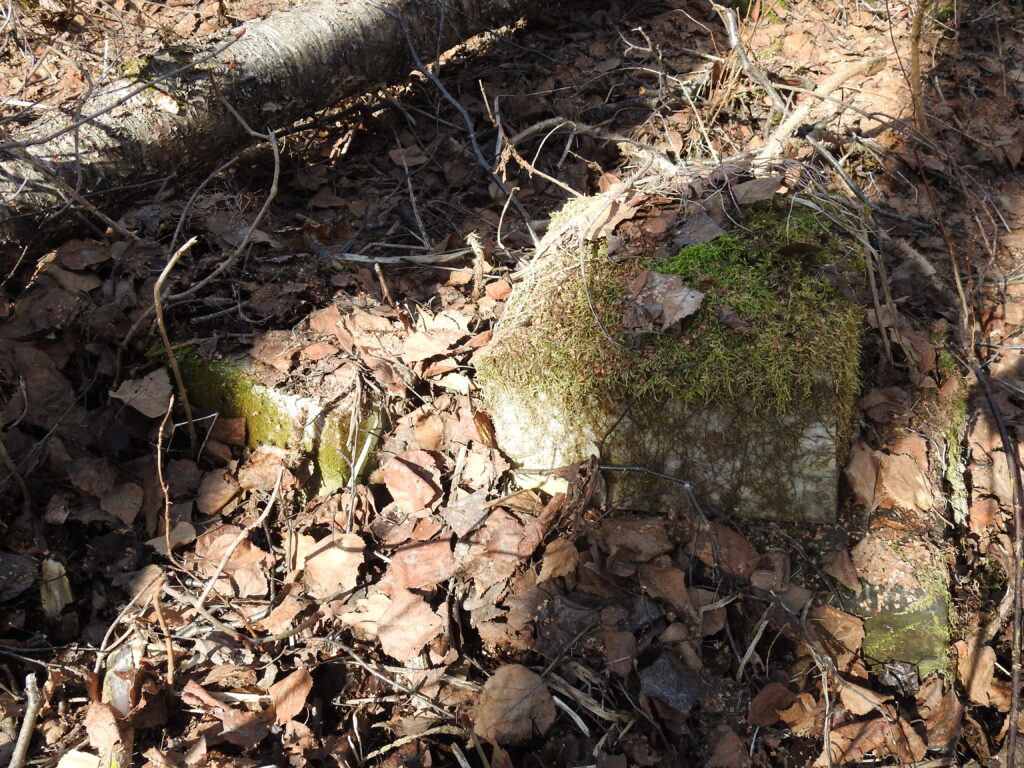
We uncovered the square mounds to find a 2-part marble headstone that read “A J Duffy - Died Jan 4, 1910”. Although you could tell that this was at one time one headstone, over the years the headstone had fallen apart and now was in two pieces.
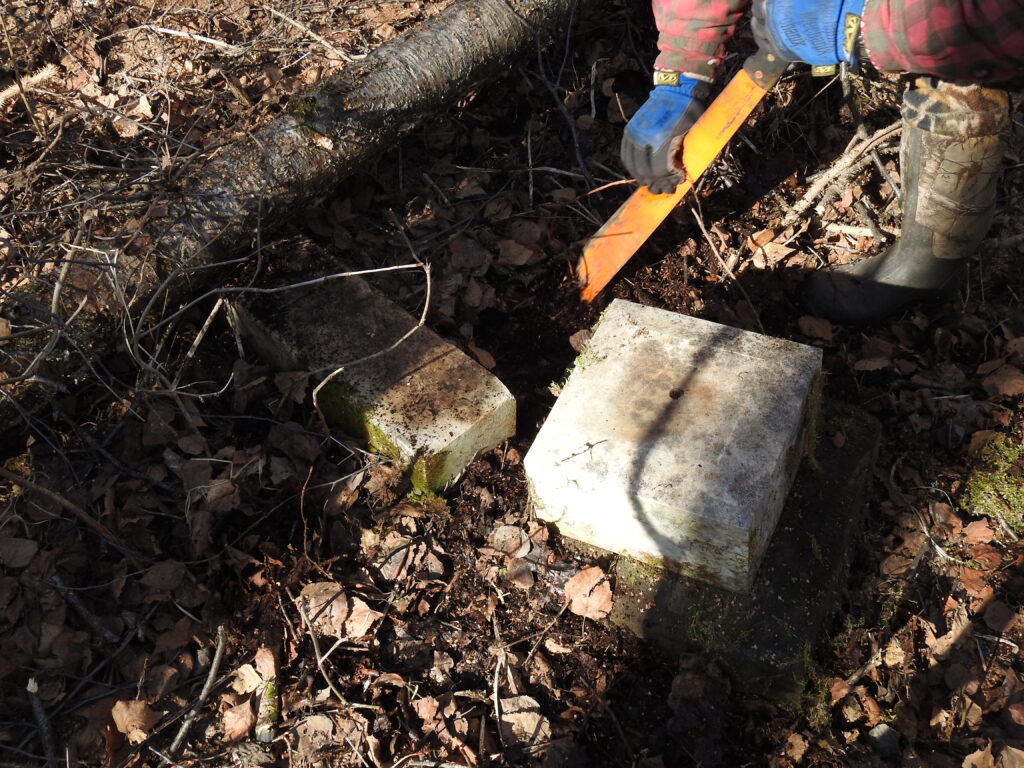
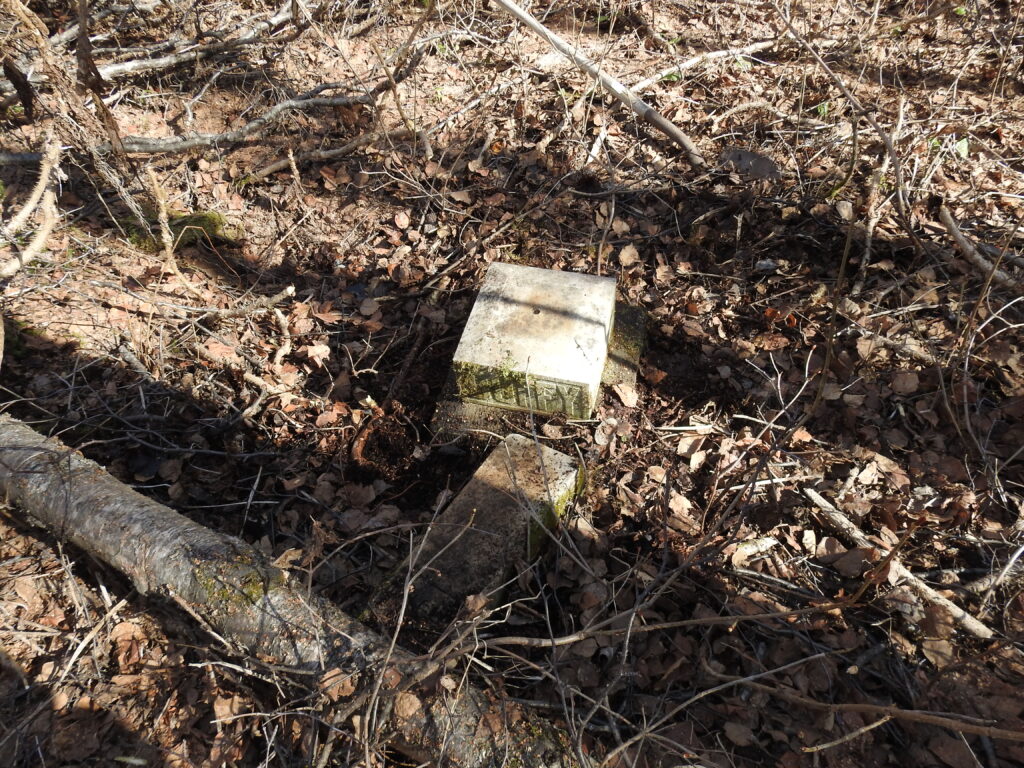
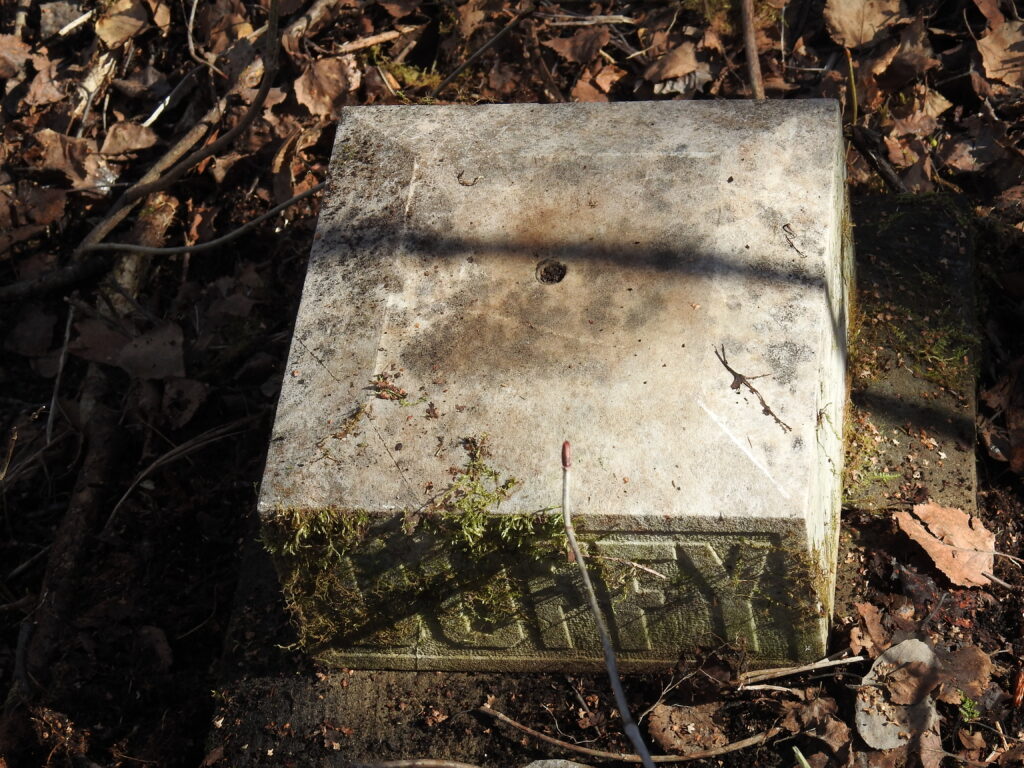
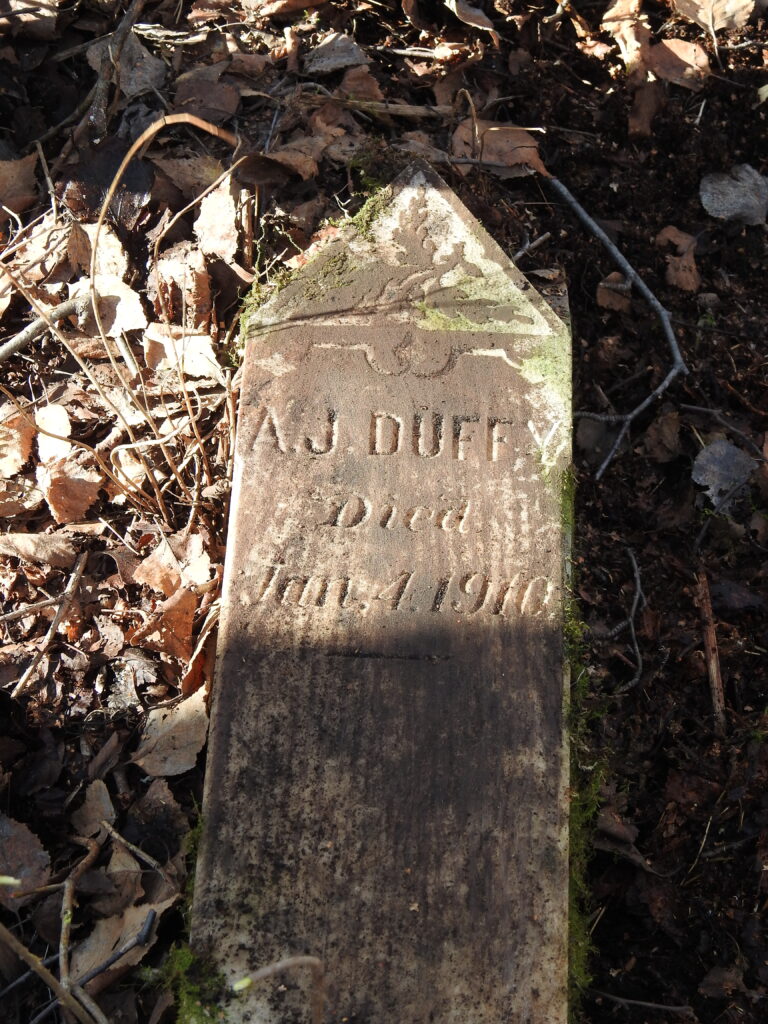
Jeff set about repairing the stones so they would once again stand one on top of the other.
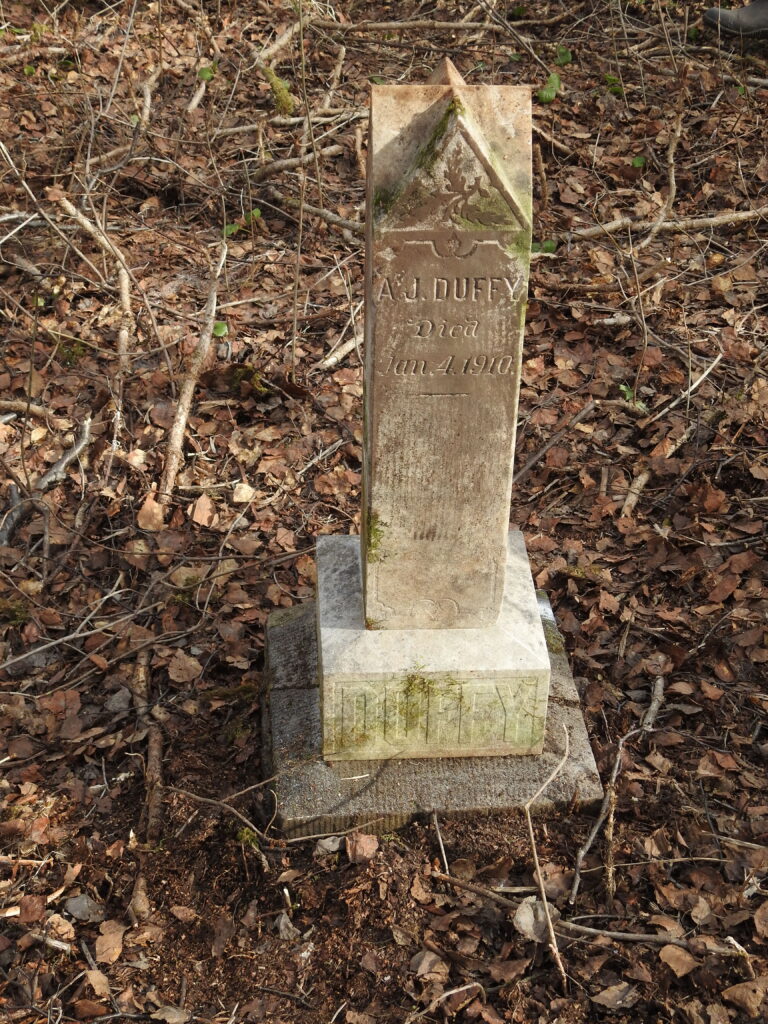
We then went back to the cabin and made a wooden sign to mark the spot, honoring our new found resident. We nailed the wooden marker to a tree near the gravesite.
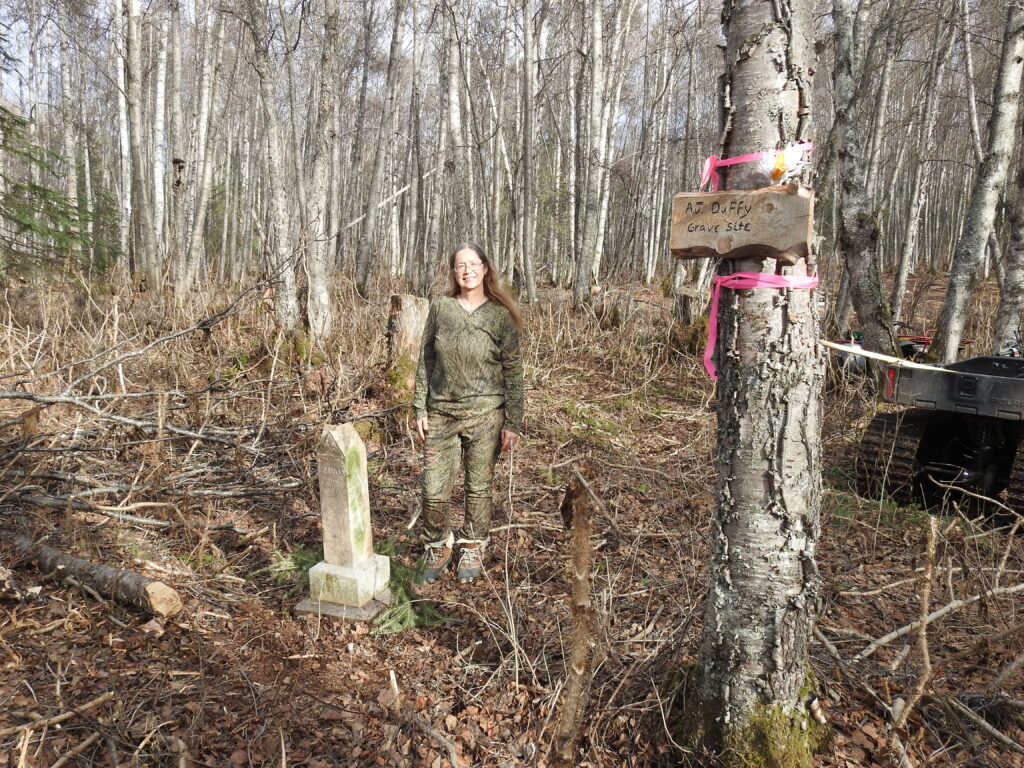
Still, we wondered who was Duffy? After fixing up his gravestone and marking it, we went back home and I began researching who he was. I started by looking for the name in the 1900 and 1910 census records for Susitna Station but to no avail. Since it was such a beautiful marble stone and very heavy we assumed it was someone of importance. Someone went to a great deal of trouble to get a stone like this ordered and sent out by barge or sled dog to Susitna Station. After some research I found that in those days you could order these stones from Sears & Roebuck catalog. But once it was delivered it still had to be shipped to Susitna Station and then carried into the woods from the river. It didn’t appear to be in a graveyard but it could have been. There were other indentations in the area but no proof they were graves. We didn’t see any other marble stones. As I mentioned before, if it was a graveyard and people were buried with wooden crosses the crosses wouldn’t have survived all these years in Alaska’s weather.
Since I couldn’t find A J Duffy in the Susitna Station census records he apparently didn’t live there so why was he buried at Susitna Station? I decided after some research on my own to contact Coleen Mielke, a local Alaska researcher, who writes and posts her interesting Alaskan stories on the internet. She was interested in the story and said she would do some research on Duffy. What she found out was amazing albeit somewhat startling. The A J stood for Andrew Jackson. Andrew Jackson Duffy was born in 1854 and lived in California. In 1890 or so he got married to Sarah Idalia Lussier, however the marriage was not good and in a fit of rage Duffy killed a man he believed Sarah was having an affair with. He was convicted of manslaughter and sent to San Quinton prison on December 31, 1894. Here is a couple photographs taken of him during his stay at San Quinton. He was sentenced to 8 years.
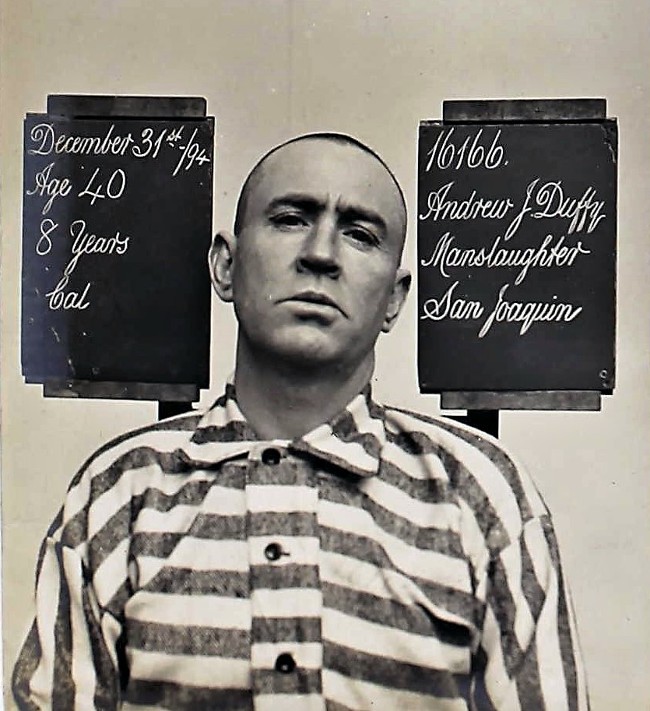
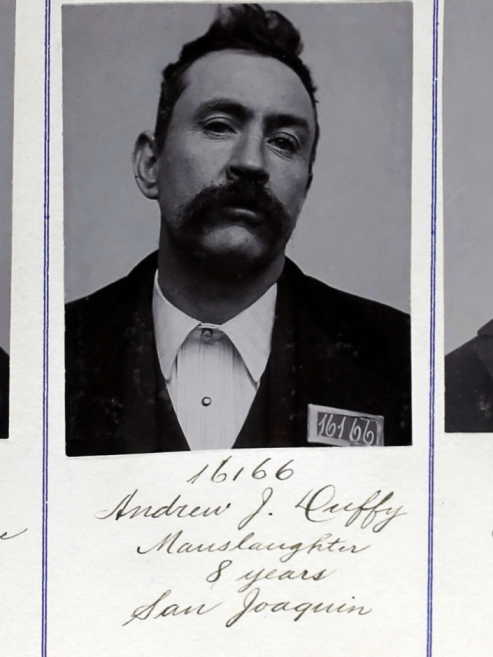
While he was in prison his wife died. He got out early on April 30, 1900, and left California for Alaska a short time afterwards. By Feb 12, 1907 he had homesteaded and received the patent on 320 acres in Knik, Alaska, where he built a hotel and started taking in guests. His prison records said he was a hotel keeper by trade so it seems he knew something about running one. At first it was a small building but he added on to it and renamed it the Pioneer Roadhouse which became famous in Knik. Here’s a picture of the Pioneer Roadhouse during that time. I’m not sure what year this picture was taken but that may be Duffy in the photograph sitting in the sled.
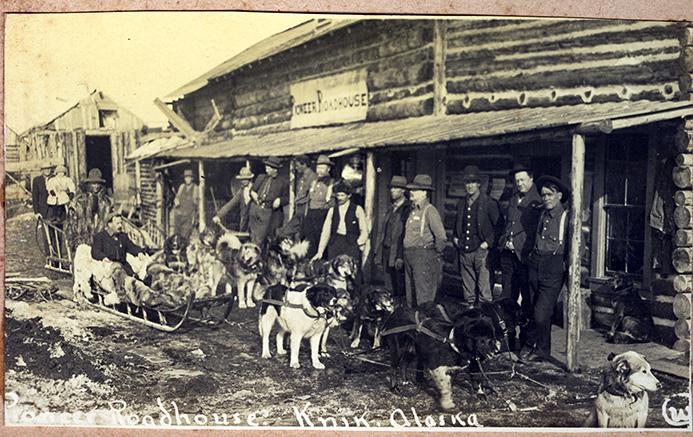
However, not many people connect AJ Duffy to the Pioneer Hotel. Even though he built the original building and named it he is not the one renowned for it. When he died his Roadhouse ended up in the hands of Frank Cannon. Cannon was the administrator of the estate and apparently couldn’t buy it outright himself so it was bought by T J McLaughlin for $500 and then resold a week later for $600 to Frank Cannon, who was called one of the most influential men in Alaska, being not only the new owner of the hotel, where he added a successful restaurant but also an attorney and legislator.
Without Coleen and I delving into the subject I don’t think anyone would ever have known that A J Duffy built the Pioneer Roadhouse. Frank is the one who got all the credit. I’m glad we could bring Duffy’s mark on Knik’s history to light. Frank Cannon had the hotel for about 5 years then became ill in 1916 and sold it to Alex Frasier for $1500. The Pioneer Hotel burned down a year later in 1917 and the town was mostly dismantled and abandoned as the people of the town moved to Wasilla when the railroad was built there.
So how did Duffy who was a resident of Knik end up buried at Susitna Station? According to Coleen, after her research into the story, Duffy had stomach problems and ran out of the medicine which controlled it and after getting very sick in Knik was taken to Susitna Station where there was a doctor. They were unable to save him and he died January 4, 1910 at 56 years old. It’s unknown who paid for the headstone and moved it out to Duffy’s grave but someone cared enough to do it. He was a pioneer of Knik and a colorful resident . It was interesting to put a story and a face to AJ Duffy. Coleen Meilke researched AJ Duffy more in depth and wrote a story about him on her website. It’s a great read if you want to look it up. The story is called “The Story of A J Duffy?” Here is her link. https://freepages.rootsweb.com/~coleen/genealogy/duffy.html


